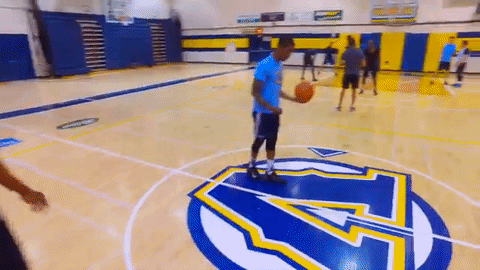Published on March 12, 2019
Written by Jonathan Migneault
Social media coordinator, Laurentian University

If you want to engage your audience in 2018, video content is a must. As the old saying goes, “a picture is worth a thousand words.” Our brains are great at remembering images, and that’s doubly true with moving images. A person is much more likely to remember something if they see it in a video than if they read it.
So video is great, and the more great video content you can produce, the better. But there’s a catch. Producing high-quality video content requires a lot of time and effort. It’s normally much more resource intensive than just sticking to photography, or the written word (as long as you’re not working on your next novel). A good video usually requires subjects, which means booking people for interviews. Next, you’ll have to record those interviews and get some relevant B-roll footage (secondary shots related to your subject) for good measure. Once you’ve collected all that footage, you then move on to editing. Depending on the length of your final product, and level of polish you want, this can take anywhere from several hours, to days.
Time and resources are at a premium
In higher ed, time and resources are at a premium. If you’re at a smaller institution, you may not have a videographer who can dedicate all their time to producing an awesome video. Or maybe you have someone who produces videos full-time, but they’re tied up with other projects.
Content production is just one of the many things on my to-do list. To make the most of the limited time I can dedicate to videos, I’m always thinking of how I can repurpose our content. If you take away one thing from this blog post, it should be this:
Repurpose your video content
You’ve spent a good part of your week producing a great video to boost student recruitment. You could upload it to YouTube and Facebook, and call it a day. That would be a good start, but why not make the most of that time and effort?
At Laurentian, we’ve taken a few steps to squeeze as much juice as possible out of our videos. To stick with my juice metaphor; start with the low-hanging fruit.
After we publish a video, I sign into our Giphy account and create animated GIFs using visuals from our videos. A GIF is a great way to give a second life to your visuals and encourage people to share them. As of this writing, Laurentian’s Giphy account has 22.5 million views. That’s not bad for a small Canadian university! Sure, a lot of those views are thanks to cute puppies, but we do have a lot of GIFs, like the one below, that give us visibility to thousands, or even millions of people.
We have to give some well-deserved credit to Antoine Ste-Marie, now a senior student recruiter with York University’s Glendon College, for having the foresight to set up the account early on.

Look for new audiences
YouTube and Facebook are the most obvious places to post your videos. But they’re not the only options. Search out new audiences on different platforms. Our latest venture has been on Instagram’s relatively new IGTV. The platform forces us to look at our videos differently because it encourages shorter lengths and a vertical aspect ratio. Your Instagram feed, LinkedIn page and even Twitter, are also good places to publish videos.
A lot of those platforms are mobile first, which brings me to my final point:
Keep it short
There’s a lot of competition online for people’s limited attention. No matter the platform, your videos should be no longer than two minutes. If you can go shorter, that’s even better. And if your video doesn’t capture audiences in 10 seconds, you’re losing engagement. However, keeping things short can be a challenge.
We’ve taken on that challenge with our latest project. Isak Vaillancourt — a student intern with our department — and I spent a full day interviewing 10 students on camera. We got testimonials on everything from student life to our campus and their programs. If all goes according to plan, we should be able to produce three videos from each student interview. That’s 30 pieces of content from one day of filming! And because all the clips will have a specific focus, they’ll be no longer than 30 seconds each.
We’re still editing the clips, but this project follows all the advice I’ve outlined in this post. We’re making the best of limited resources. We’ll repurpose our content (the clips can be shared on multiple platforms to engage new audiences). And, as I’ve already mentioned, we’ll be keeping them short!